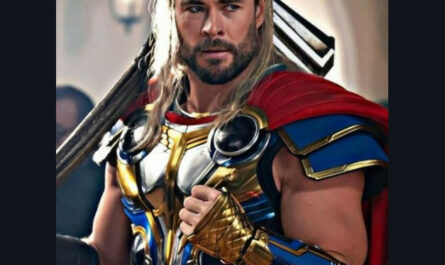In the realm of Hollywood, few actors possess the raw intensity and transformative prowess of Joaquin Phoenix. With a career spanning decades and an impressive repertoire of critically acclaimed performances, Phoenix has solidified his status as one of the most versatile and enigmatic actors of his generation. Central to his ability to inhabit complex and multifaceted characters is the artistry of costume design, which plays a pivotal role in visually communicating the depths of his on-screen identity. In this comprehensive exploration, we delve into the palette of Joaquin Phoenix’s characters, examining how color is utilized to reflect their inner turmoil, transformation, and development.
Muted Tones for Isolation and Inner Turmoil
The Subdued Palette of Arthur Fleck
In the critically acclaimed film “Joker” (2019), Joaquin Phoenix delivers a tour de force performance as Arthur Fleck, a mentally troubled loner who descends into madness and violence. Central to the visual storytelling of the film is the use of muted tones in Arthur’s wardrobe, which reflect his social isolation, economic hardship, and underlying mental illness. From his drab green jacket to his worn-out brown pants, Arthur’s initial costumes are characterized by dull, earthy hues that mirror the bleakness of his existence. These muted colors serve to underscore Arthur’s sense of alienation and disconnect from the world around him, setting the stage for his transformative journey into the iconic character of Joker.
Freddie Quell’s Aimless Odyssey
In “The Master” (2012), Joaquin Phoenix portrays Freddie Quell, a troubled World War II veteran struggling to find his place in post-war America. Once again, costume designers utilize a subdued palette of beige and khaki to convey Freddie’s aimlessness and inner turmoil. His wardrobe, consisting primarily of bland colors and nondescript attire, reflects his sense of displacement and lack of direction. As Freddie grapples with his inner demons and becomes embroiled in the enigmatic teachings of the titular character, Lancaster Dodd, the muted tones of his costumes serve as a visual metaphor for his journey towards self-discovery and enlightenment.
Bold Colors for Transformation and Assertion
The Evolution of Arthur Fleck into Joker
In “Joker,” the use of color undergoes a striking transformation alongside Arthur Fleck’s descent into madness. As Arthur embraces his alter ego of Joker and asserts himself as a symbol of anarchy and chaos, his wardrobe becomes increasingly vibrant and audacious. The iconic purple suit he wears during his climactic talk show appearance serves as a bold statement of his newfound confidence and defiance. Against the backdrop of Gotham City’s gritty streets, the vibrant hue of Joker’s suit symbolizes his rejection of societal norms and his embrace of his true, anarchic self. This dramatic shift in color palette not only underscores Arthur’s transformation but also serves as a visual representation of his liberation from the constraints of his former identity.
Johnny Cash’s Iconic Persona
In the biographical drama “Walk the Line” (2005), Joaquin Phoenix embodies the legendary musician Johnny Cash, capturing both his inner turmoil and his magnetic stage presence. Central to Cash’s persona is his signature attire of bold black suits contrasted with crisp white shirts. This sharp juxtaposition of colors reflects Cash’s internal struggle between darkness and redemption, as well as his enduring legacy as a rebel with a cause. Whether he’s belting out a soulful ballad or confronting his inner demons, Phoenix’s portrayal of Cash is elevated by the visual impact of his iconic wardrobe, which serves as a powerful expression of his character’s complex and conflicted nature.
Subtle Shifts for Character Development
Maximus Decimus Meridius’ Journey of Redemption
In the epic historical drama “Gladiator” (2000), Joaquin Phoenix portrays the treacherous Commodus, whose actions set in motion a series of events that lead to the downfall of the Roman Empire. Opposing Commodus is Maximus Decimus Meridius, played by Russell Crowe, a revered general whose family is murdered by Commodus. Costume designers utilize subtle shifts in color palette to depict Maximus’s journey of redemption and revenge. Initially dressed in the gleaming armor of a Roman general, Maximus is later forced into muted slave attire after being betrayed by Commodus. As he regains his fighting spirit and seeks vengeance against his betrayer, the costume designer incorporates splashes of red into Maximus’s wardrobe, symbolizing his growing defiance and thirst for revenge. These subtle shifts in color palette serve to underscore Maximus’s character development and add depth to his arc throughout the film.
Conclusion: The Artistry of Costume Design in Joaquin Phoenix’s Filmography
In conclusion, the palette of Joaquin Phoenix’s characters, as expressed through costume design, is a testament to the artistry and attention to detail that defines his performances. From the muted tones of isolation and inner turmoil to the bold colors of transformation and assertion, costume designers play a crucial role in shaping the visual identity of Phoenix’s characters and enhancing the narrative depth of his films. By carefully considering color psychology and its symbolic implications, costume designers create a visual language that enriches Phoenix’s performances and immerses audiences in the world of his characters. As Phoenix continues to mesmerize audiences with his intense and transformative portrayals, the artistry of costume design will undoubtedly remain a cornerstone of his cinematic legacy, coloring the canvas of Hollywood with depth, emotion, and intrigue.



